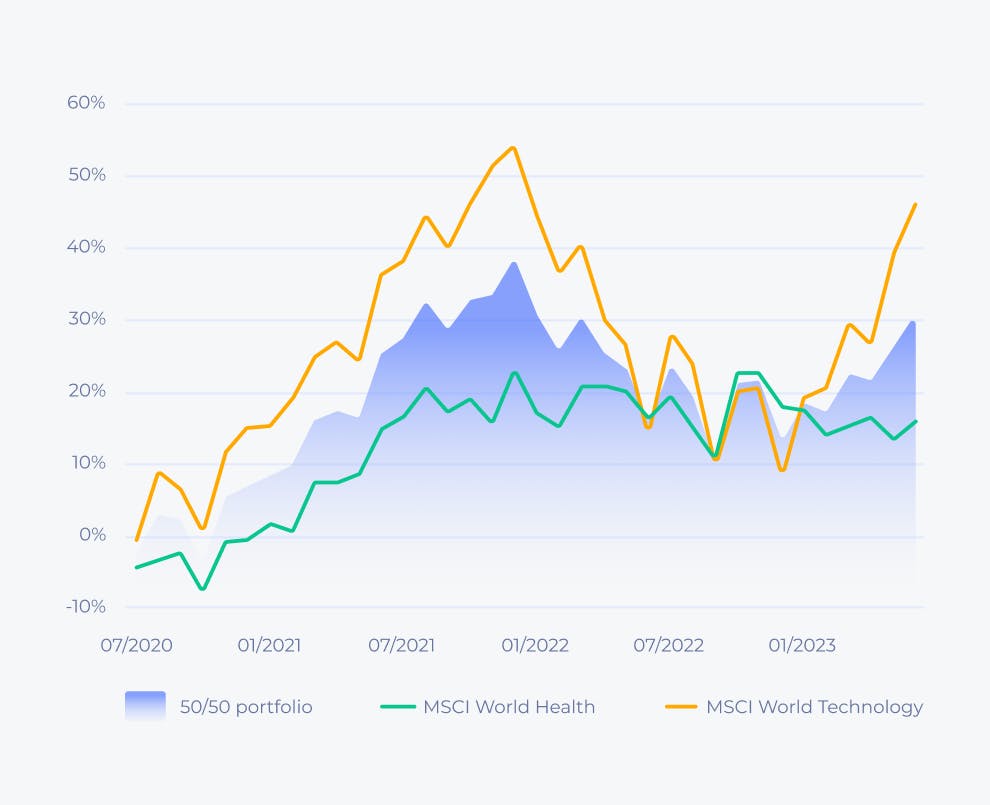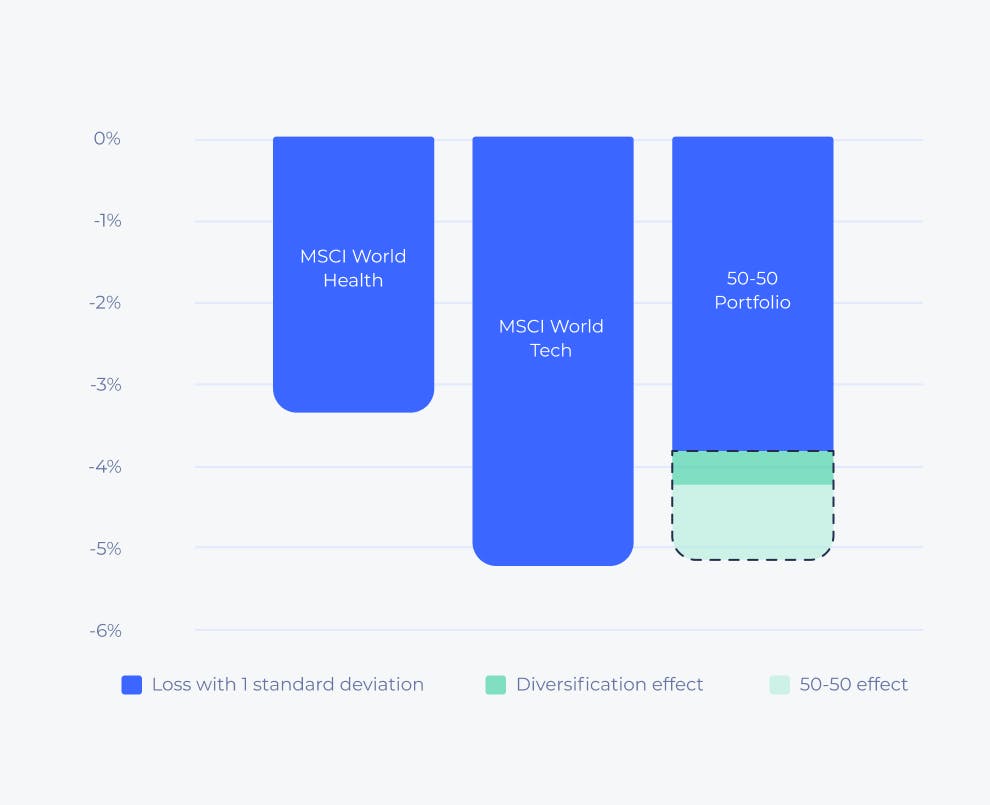The benefits of diversification: Using ETFs to spread your investments
Spreading your money across different investments within a portfolio is called diversification. In this article, you learn about all the benefits of diversification.
Use ETFs to diversify your portfolio
At Selma, we use Exchange Traded Funds (ETFs) to diversify your investments. ETFs are made up of many different companies. This gives you a broad spread across industries and asset types. Diversification helps spread your risk. It reduces the impact of the performance of any investment in your overall portfolio.
In more human terms, diversification should be your stress reducer! 🙂
Why not just pick the winners and drop the losers?
If we always knew the perfect investment at any given time, diversification would be unnecessary. However, we believe that it is impossible to pick the winners and leave the losers. This belief is backed up by a large body of scientific evidence accumulated over the last few decades. Try searching the internet for "efficient market hypothesis" if you want more information.
Diversification would still make sense, even if it was sometimes possible to pick the winners and leave the losers. If you inevitably "back the wrong horse" once in a while, your overall portfolio will suffer less thanks to diversification.
The benefits of diversification – an example
Let's use the following example to illustrate the benefits of diversification: Look three years back and pick two ETFs, one focused on companies in the healthcare sector and the other on modern technology companies (think Google). As you can see from the performance chart below, the two ETFs are very different in nature.
A portfolio with 50% each in these two ETFs will have a much more stable and reliable performance. This is the benefit of diversification.
Risk reduction
Investment professionals like to measure this effect by comparing the performance with the risk of the investment. One way to illustrate this point is to compare how bad negative returns can be. The chart below shows what kind of monthly losses sometimes occurred over the last three years (for maths fans, we use "one standard deviation" loss).
So, chances were that the Technology ETF saw a -5.3% return in two months every year. For the Health Care ETF that number was -3.4%. Combining these two ETFs to a simple 50-50 portfolio wouldn’t have given you a simple average of the two numbers (-4.3%), though. It would have reduced the loss to -3.9%. This additional loss reduction of 0.4% is the effect of diversification!
Remember that the return was always a simple average of the two ETFs. This is the magic of diversification: your risk of loss is reduced by more than what you give up in potential return.
Different levels of diversification
Diversification can be done across
- Companies
- Industries
- Countries
- Continents
- Asset classes
- Currencies
What is an “asset class”?
An asset class refers to a group of financial securities or investments that share similar characteristics and behaviors in the market. Common asset classes include stocks, bonds, real estate, and commodities.
Our example above started with two ETFs that are each already diversified across over 100 companies. As you can see, there are still a lot more benefits to be reaped by going through the list of diversification levels. Hence, Selma builds portfolios that consider all these levels when spreading the investments.
To remember
Diversification can make you sleep better. Your investments are less susceptible to a crisis in one company, one industry, or one part of the global economy.
Daniel Trum
Daniel is an economist (MSc) and financial analyst with over 10 years experience in the Swiss banking industry. He leads the investment management at Selma and he’s passionate about finding better ways to invest for everybody. Follow him on LinkedIn to get regular updates on what he thinks about financial markets.
LinkedIn

